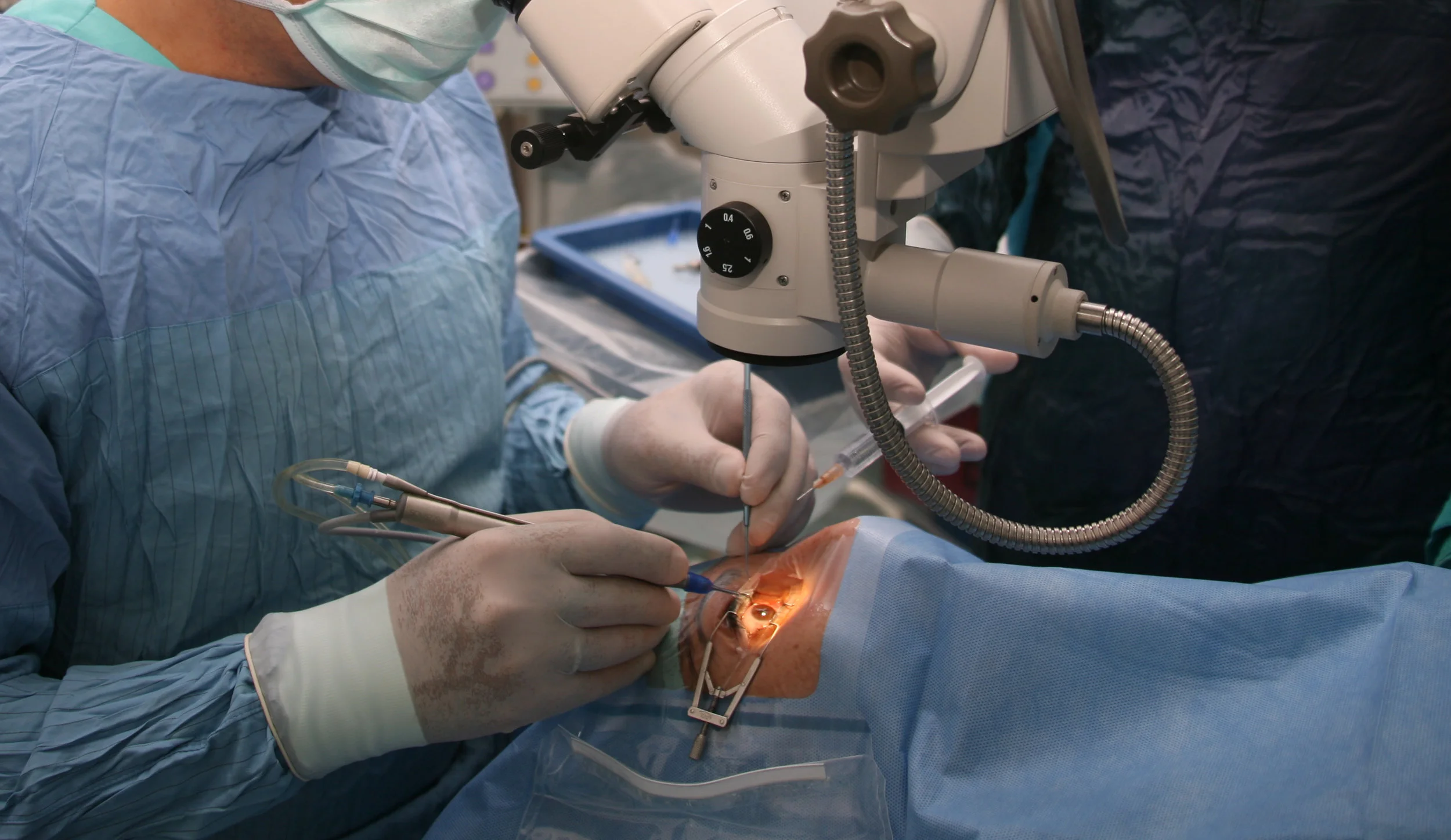Cataract Surgery
Cataract forms in the crystalline lens.
Crystalline Lens
The crystalline lens is located inside your eye, just behind the colored iris. Cells and proteins in the lens keep the lens crystal clear. When healthy and clear, the lens keeps your vision focused.
Cataract
Over time, the cells and proteins lose the ability to keep the lens clear. These changes cloud the lens and prevent images from getting into the eye accurately. In this manner, the crystalline lens slowly becomes a cataract.
Night glare.
Blurry reading.
Symptoms
- Clouded, blurred, or dim vision
- Increasing difficulty with vision at night
- Sensitivity to light and glare
- Frequent changes in eyeglass prescription
- Fading or yellowing of colors
Decision for surgery
The decision for surgery depends on how much the cataracts are interfering with your vision. If you decide to delay, don't wait until you can't see stairs or fail a driving test. If you have another eye condition, we recommend surgery sooner because cataracts make it difficult to manage other eye problems.
Measuring for a lens implant
After removal of your cataract, a properly powered intraocular lens implant (IOL) needs to be implanted to restore vision. If you have a significant eyeglass prescription (refractive error), we can leverage the power of the IOL to dramatically decrease your dependency on glasses. Computerized measurements and calculations determine IOL power with such accuracy that we can achieve near-zero post-operative refractive error in the majority of cases.
Lens implant selection
Different implants are available, each with the capacity to eliminate or reduce your dependency on glasses. For patients with astigmatism, a toric IOL can be used to improve visual clarity without prescription glasses. Likewise, for patients who feel encumbered by reading glasses, multifocal IOLs can enhance near vision without glasses.
Outpatient surgery
Surgery is performed at an outpatient surgical facility. Topical numbing drops & IV sedation provide comfortable anesthesia. Computerized laser, ultrasound, and vacuum permit safe & efficient cataract removal. Implantation of the IOL completes the surgery.
Recovery
Patients return home the same day immediately after surgery. Eye drops are prescribed to prevent infection and inflammation. Visual recovery is rapid. Most patients have usable vision hours after surgery, and heal fully within weeks.





